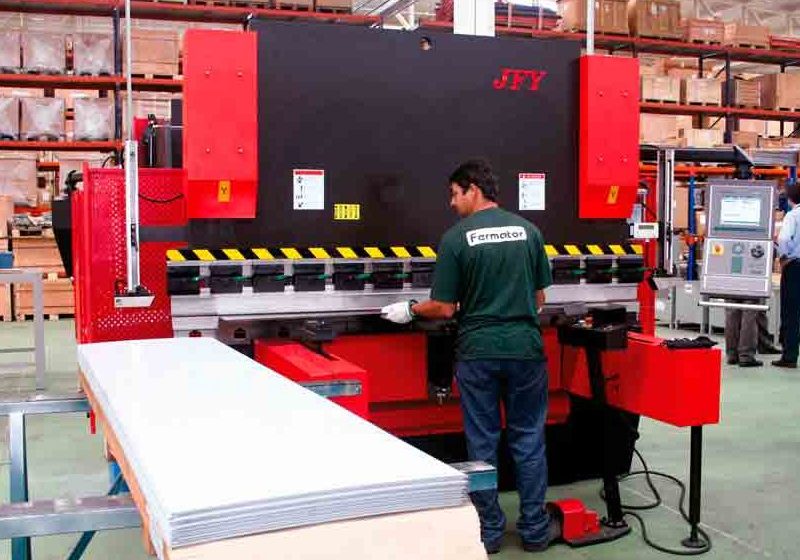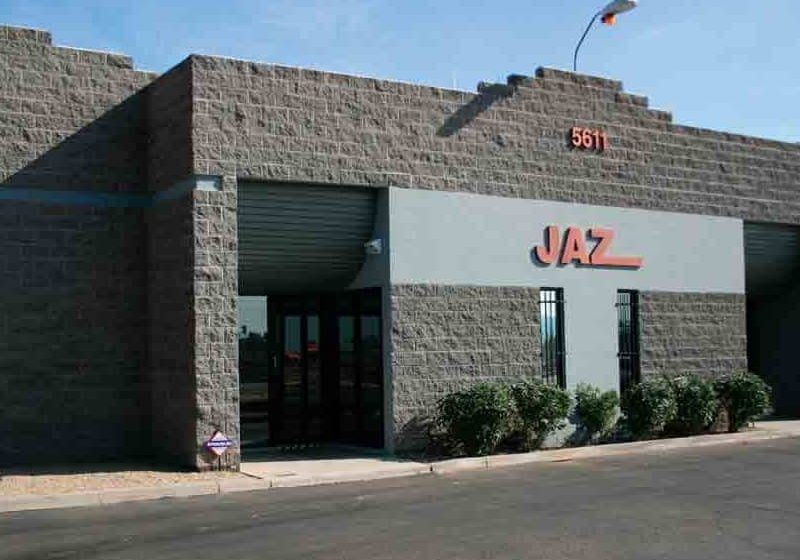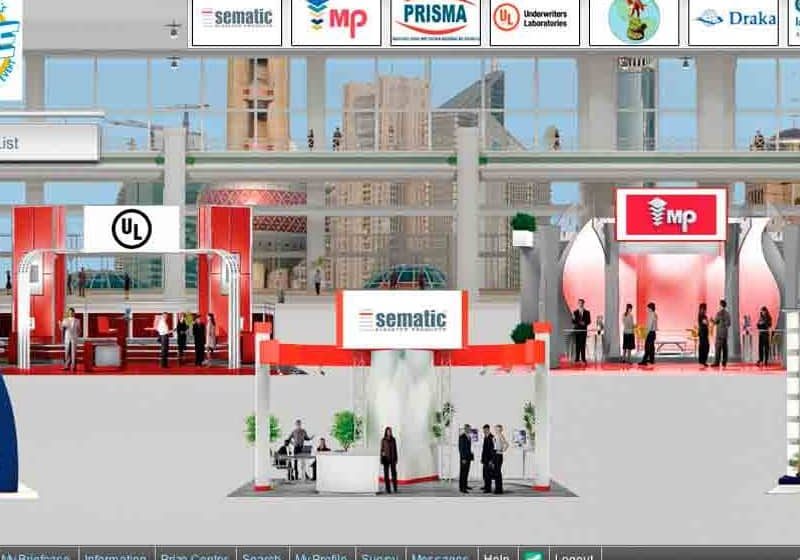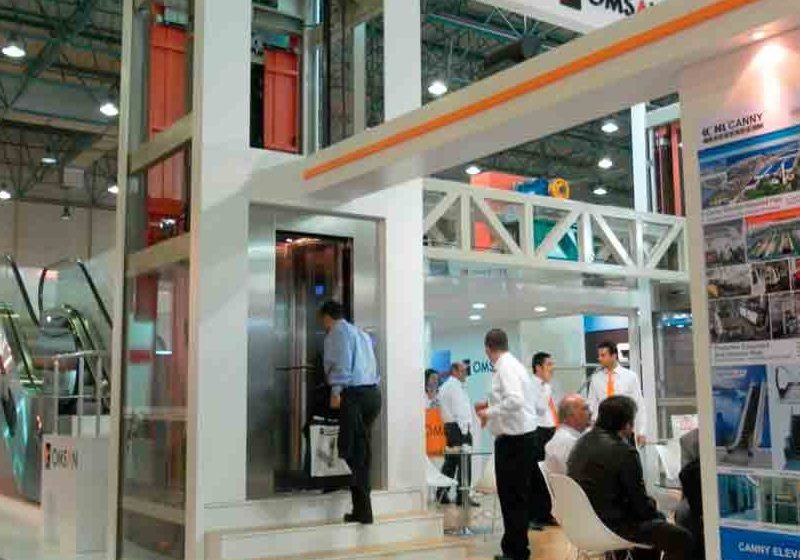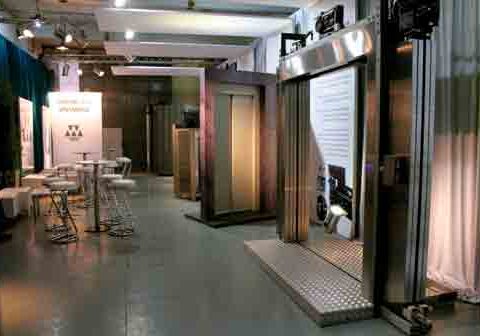Building Technology: The Planning and Performance of Groups of Elevators
Oct 1, 2011
A study of the service quality of group planning and destination group controls
Paternoster Elevators
Long ago, a few low-rise office buildings were served by an endless string of small, open cars that slowly rotated in ascending and descending hoistways. These installations were called paternosters. Waiting times were short because passengers could always see an arriving car and jump in at the right moment. Travel times were long, giving passengers ample time to concentrate on the right moment to jump out.
Modern high-speed groups try to imitate paternosters. For a four-car group, an ideal positioning of the cars exists when one car is on or near floor zero, a second car is halfway ascending to the top floor, a third car is on or near the top floor, and a fourth car is halfway descending to floor zero. The cars are elements in an imaginary string of rotating cars. The group control is the imaginary string.
An increase in the number of cars in this string will reduce the average time-distance between cars. The group’s transport capacities increase. An additional car implies that the average number of passengers per car is substantially reduced under all traffic conditions. Consequently, cars make fewer stops, round-trip times are shorter, and the imaginary string of cars rotates faster. It is obvious that an additional car(s) increases transport capacities twofold. Consequently, cars can be much smaller. This example of group operations shows both the importance of planning and the essential function of group controls.
Traditional Groups with Large Cars Are Inefficient
The most common group of elevators consists of four large cars with a nominal contract load of about 1600 kg (20 passengers). The majority of existing groups have traditional controls with up/down buttons on the landings and floor buttons in the cars. During periods with light or medium traffic densities, these groups deliver satisfactory service qualities, because the cars transport few passengers. Round trip and travel times in the cars are short, because the cars make few time-consuming stops.
During periods with heavy traffic, full cars make many stops that cause long round trip and travel times. The group control has little or no influence on operations, because passengers control all car movements with the floor buttons. This implies that the efficiency of traditional groups is worst when needed most.
Early last century, elevator attendants and their supervisors prevented this loss of control and efficiency by assigning passengers with the same destination to specific cars. Their intelligence and experience with the destinations of passengers ensured satisfactory service qualities during periods with heavy traffic. This intelligence was lost when the attendants and their supervisors/dispatchers were abolished.
Group Planning Is Always a Compromise
The planning and performance of each group is a compromise between the following four sets of interdependent characteristics:
- Up and down transport capacities
- Time-dependent service qualities
- Space and energy requirements
- Capital and maintenance costs
The best possible compromise is a group configuration that optimizes group service qualities 1 and 2 and minimizes characteristics 3 and 4.
This article proves that best possible configurations and efficiency are defined by the relationship between group transport capacities and time-dependent service qualities. This logic demonstrates that groups with large cars are inefficient and discloses:
- Large elevators require too much building space and consume too much energy.
- Large elevators are inefficient and cause long waiting and travel times during periods with heavy traffic, because they waste time by making too many stops.
Consider the following: A large single car can serve a low-building or a short-building zone. If we substitute the single car with a two-car group with contract loads that equal 50% of the single car, all service qualities improve. In comparison with the large car, the average number of stops per round trip of the small cars will be fewer under all traffic conditions. Consequently, their average round-trip times are shorter at all times. The two-car group can, under all traffic conditions, transport more passengers than can the large single car; i.e., the two-car group is more efficient than the single car. Moreover, the average waiting time (AWT) and the average travel time in the cars (ATTC) of the two-car group are reduced for all traffic conditions.
Each increase in the number of cars of a group allows smaller contract loads and improves group efficiency (transport capacities) and time-dependent service qualities. The better efficiency of groups with more and smaller cars enables groups to serve more floors or larger populations. Groups with five or six cars may have small contract loads and will deliver high transport capacities in combination with outstanding time-dependent service qualities. This logic is valid for any group and any group control system. It is an inherent feature of groups of elevators.
The Configuration of Traditional Groups
As previously mentioned, most buildings are served by traditional four-car groups with large cars. For groups with traditional controls (i.e., reactive non-intelligent controls), these four-car configurations are the best possible compromise.
Traditional groups with six small cars do not exist, although these configurations would allow a reduction of the contract load to 800 kg. These six-car configurations can be accommodated within the same space required for traditional groups with four large cars. The energy consumption of a six-small-car group is reduced pro rata to total contract loads (6400/4800 kg), i.e., by 25%. The transport capacities of the six-car group are about 5% higher. The six-small-car group doubles the number of round trips during periods with heavy traffic; i.e., doubles the service frequency, substantially reducing both waiting and travel times.
Traditional groups with six large cars do exist, particularly in many prestigious buildings. These groups use their greater transport capacities to serve three or four additional floors. The additional floors substantially increase the population served by a group. Moreover, the average round-trip time of each car increases under all traffic conditions. The efficiency of each car is reduced accordingly. The result of this false planning practice is an increase of the average time to destination (the sum of average waiting and travel time) under all traffic conditions.
Although traditional six-car groups with large cars are more expensive, require more building space and consume more energy, their time-dependent service qualities are worse than those of traditional four-car groups. Their transport capacities are about 5% less. A traditional four-car group can usually serve 12-14 floors. This number depends on floor populations. A 50% increase in the number of cars allows a 25% increase in the number of floors served due to the reduced group efficiency.
Intelligent Destination Group Controls
During the last 20 years, destination group controls became the preferred control system for groups in tall buildings. These require passengers to enter their destinations on control panels in the lobbies. The control responds by assigning each passenger to a specific car. The essential difference with traditional groups is the absence of floor buttons in the cars.
Existing destination group controls were designed before the relativity of group characteristics was discovered by the author. Consequently, existing groups with destination controls do not yet possess the artificial intelligence and artificial experience essential for achieving the best possible efficiency and service qualities. Existing destination controls are reactive but not yet proactive.
Intelligent destination group controls will have learning systems that continuously monitor, record and analyze car operations, carloads, service calls and other group- and building-specific data. These systems facilitate the group control to create traffic density patterns to and from each floor, service call patterns, etc. These learning abilities make intelligent destination controls proactive.
The learning abilities also enable intelligent group controls to create data structures that disclose performance data for all possible traffic conditions. These data structures make the performance potential of a group transparent, i.e., predictable and controllable. Controllable because intelligent groups have a single control objective — minimizing and equalizing round-trip times (RTTs) under all traffic conditions. This objective maximizes transport capacities and simultaneously optimizes all time-dependent service qualities for all traffic conditions, i.e., at all times.
The RTT objective is realized by minimizing and equalizing the permitted number of stops for each car and for each up and down trip relative to momentary and/or anticipated traffic densities. This system enables, at all times, the immediate assignment of passengers to specific cars.
Performance and Configurations of Groups with Intelligent Destination Controls
A remarkable feature of intelligent groups is the ability to reduce average times to destination when traffic densities increase. It is easy to explain this feature.
An increasing traffic density requires a shorter average RTT; i.e., the number for permitted stops must be reduced. The AWT increases and the ATTC is reduced. The reduction of the ATTC exceeds the AWT increase.
Groups with intelligent destination controls will, for all traffic conditions, deliver required up and down transport capacities in combination with the best possible time-dependent service qualities for momentary traffic densities. Time-dependent service qualities will be equitable for both up and down passengers.
For new buildings, intelligent destination controls will enable substantial space and energy savings. For example, the optimal minimum contract load for intelligent four-car groups will be about 1200 kg. For six-car groups, this minimum will be about 800 kg, and for five-car groups, about 1000 kg. Minimum contract loads depend on the number of cars and the number of floors served and their populations. If the optimum for the number of floors that can be served by a specific group is exceeded, a higher minimum contract load will be required. Space and energy requirements increase. Group efficiency and time-dependent service qualities will worsen.
Groups with intelligent destination controls may have larger contract loads and bigger cars for improved passenger comfort; however, larger cars do not affect best possible time-dependent service qualities. Planning the configuration and performance of intelligent groups will be an exact exercise, with service qualities that can be contractually guaranteed.
The Elevator Industry
The relativity of the characteristics that define the performance and efficiency of groups presents a dilemma for elevator companies and elevator consultants. To simply deny the existence of relativity seems impossible. To accept and adopt relativity requires the development of intelligent group controls and abandoning incorrect (empirical) performance evaluation and planning methods. These incorrect methods are the cause of special business practices in the elevator industry.
Until now, the theoretical performance potential of groups was unknown. Group controls that deliver the best possible performance under all traffic conditions were (and still are) unavailable. This situation has caused (and continues to cause) insecurity among building planners and owners about the performance of groups. This insecurity has created demand for independent elevator consultants. Planners and owners feel more secure obtaining independent advice in respect to elevator planning. This practice is convenient for elevator contractors, because a third party apparently assumes responsibility for group performance.
This situation has been detrimental for all concerned. Elevator contractors have lost, to a great extent, their influence on elevator planning. The involvement and interest of sales and R&D personnel in the planning of groups was reduced. The fact that the planning of groups and their performance are interdependent has been obscured. Consultants have lost opportunities to make their work more meaningful and important. Owners and planners cannot plan or buy the most economical and best-performing groups.
For the elevator industry, intelligent destination group controls present new problems that may appear unattractive. Best possible group performance will ultimately cause the standardization of group controls. This is likely to affect competition for new projects and the maintenance of existing groups. The integration of elevator group controls in building management systems might be a next step. In view of the importance of building security systems, such a development appears logical.
Intelligent destination controls monitor traffic to and from each floor. They can record and report the coming and going of individual members. Building managers and tenants have an interest in these data. They could also be used to control air-conditioning or even lighting. The author recommends that building owners and planners demand efficient groups that deliver the best possible service qualities under all traffic conditions. Service qualities should be subject to contractual guarantees. Intelligent destination group controls are simple and easy to realize, because their data structures make performance transparent and controllable.
Leo Weiser Port invented destination group controls (Sydney, 1960s). The development of intelligent destination (proactive) controls is the next step. Market demand is essential for this to happen. This article demonstrates that building planning and intelligent controls are decisive for group performance. When building owners, architects and consultants become aware that they can define and control elevator planning and performance, demand will follow. The first building with intelligent groups will demonstrate their superior performance and cause a breakthrough.
In the book The Planning and Performance of Groups of Elevators, the inherent relativity of group transport capacities and their time-dependent service qualities is proved mathematically. It describes in detail the logic, systems, mathematics and functions of intelligent destination group controls. This book can be accessed via the author’s website: www.elevatorgroupcontrols.com.
Get more of Elevator World. Sign up for our free e-newsletter.


